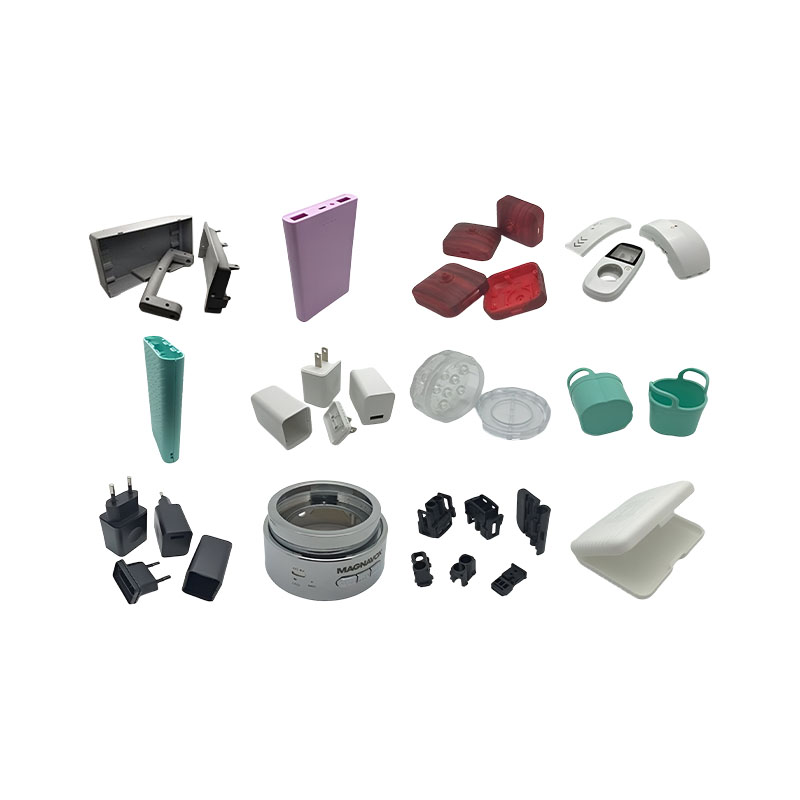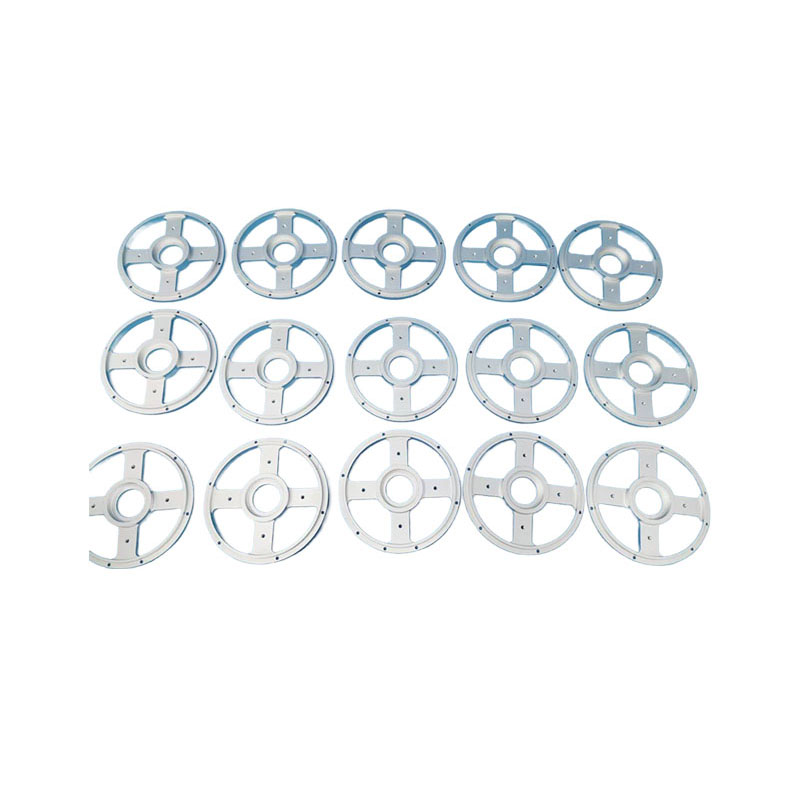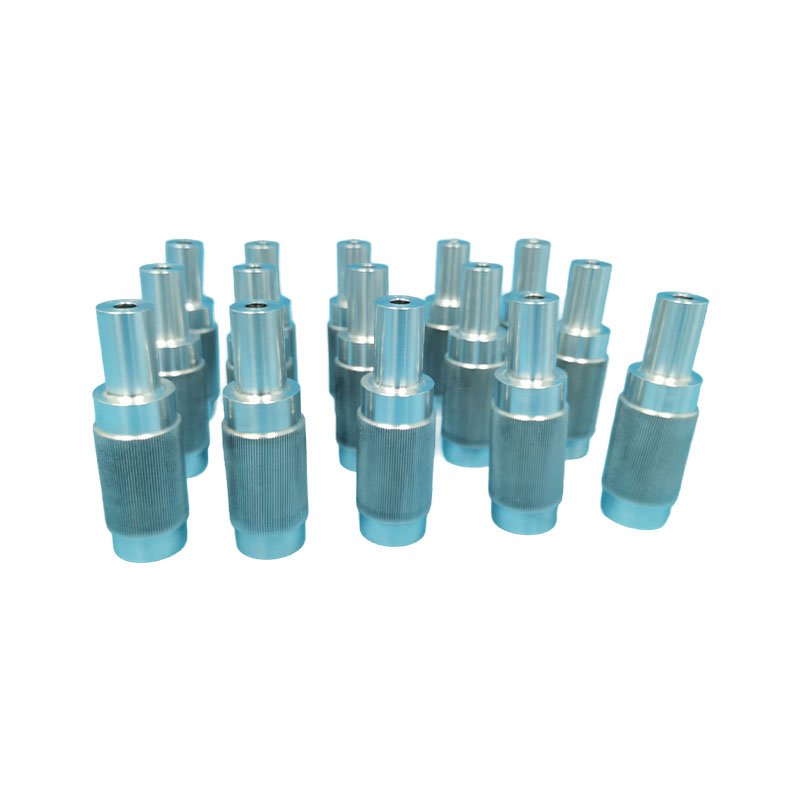How to control deformation during aluminum cnc turning processing?
Release Time : 2025-06-12
During the aluminum CNC turning process, workpiece deformation is a common problem that affects machining accuracy. This is related to many factors such as the characteristics of the aluminum alloy material itself, cutting force distribution, temperature changes, and clamping methods. To effectively control deformation, it is necessary to take comprehensive measures from multiple aspects such as process design, tool selection, and parameter adjustment. While ensuring machining efficiency, the accuracy of workpiece size and shape is ensured. The following describes the specific control methods from the perspective of practical operation.
Reasonable design of clamping methods is the primary link in controlling deformation. Aluminum alloy materials are relatively soft and have relatively poor rigidity. If the clamping force is unevenly distributed or the force point is improperly selected during clamping, it is very easy to cause local deformation of the workpiece. In actual operation, elastic clamps or multi-point support structures can be used to make the clamping force act evenly on the workpiece surface to avoid excessive force on a single point. For example, when clamping thin-walled parts, slit sleeves or special soft claws are used to disperse the clamping force by increasing the contact area. At the same time, the support point position needs to be adjusted according to the shape of the workpiece to ensure that the clamping is stable while reducing the introduction of additional stress, thereby reducing the risk of deformation from the source of clamping.
The selection and wear state of the tool directly affect the generation of cutting force and cutting heat, which in turn is related to the degree of deformation. For aluminum alloy materials, tools with large rake angles and sharp cutting edges should be selected to reduce cutting resistance and cutting heat. The tool material should be selected from cemented carbide or ceramic materials, whose good wear resistance can reduce the fluctuation of cutting force caused by tool wear. In addition, the tool wear should be checked regularly. When the blade is worn or chipped, the cutting force will increase significantly, causing the workpiece to be deformed due to heat. At this time, the tool should be replaced in time to maintain the stability of the tool cutting performance and avoid deformation hazards caused by tool problems.
The optimization of cutting parameters is the key link in controlling deformation. The combination of cutting speed, feed rate and back cutting amount directly affects the heat generation and force distribution during the cutting process. In aluminum alloy turning, if the cutting speed is too high, the cutting temperature will rise sharply and the thermal expansion of the material will increase; if the feed rate is too large, the cutting force will increase significantly, which is easy to cause the workpiece to be deformed by force. In actual operation, it is necessary to select a moderate cutting speed and a small feed rate according to the workpiece structure and material grade, and use multiple passes to control the back cutting amount. While reducing the accumulation of cutting heat, the influence of single cutting force on the workpiece is reduced, so that the deformation during the processing can be effectively controlled.
Cooling and lubrication measures play an important role in suppressing thermal deformation. When turning aluminum alloys, cutting heat will cause the workpiece temperature to rise and produce thermal expansion deformation, especially for thin-walled parts or parts with a large aspect ratio. Using a suitable cutting fluid for sufficient cooling can timely remove the heat in the cutting area and reduce the temperature gradient of the workpiece. The selection of cutting fluids must take into account both cooling and lubrication properties. Emulsions or synthetic cutting fluids can form a lubricating film between the tool and the workpiece, reduce friction heat generation, and continuously flush the cutting area through a circulating cooling system to keep the workpiece temperature within a relatively stable range and avoid deformation caused by local overheating.
Optimizing the processing route can reduce deformation accumulation from the process. For aluminum alloy parts with complex structures or high precision requirements, the principle of separating rough and fine processing should be followed. During rough machining, a large cutting amount is used to quickly remove the excess. At this time, the workpiece is deformed greatly, but it can be corrected by subsequent fine machining; during fine machining, a small cutting amount is used to complete the final machining with a small cutting force and cutting heat, reducing deformation during machining. In addition, the process sequence can be arranged reasonably, such as machining the reference surface first and then machining other surfaces, or adding aging treatment between processes to release the internal stress of the workpiece, which can further reduce the deformation in subsequent machining.
Controlling the release of internal stress in the workpiece is a deep measure to reduce deformation. Aluminum alloy materials will have residual internal stress during casting, forging or heat treatment. Stress redistribution during turning can easily cause workpiece deformation. For important parts, stress relief annealing can be performed before machining to relax the internal stress by heating and heat preservation; or natural aging can be used to place the workpiece for a period of time to slowly release the internal stress. During machining, avoid sudden changes in cutting conditions, such as suddenly increasing the cutting amount, so as not to induce concentrated release of internal stress and cause deformation of the workpiece. By releasing internal stress in advance, the dimensional stability of the workpiece after machining can be improved.
The operator's experience accumulation and real-time monitoring are also indispensable. In aluminum CNC turning, operators need to closely observe abnormal conditions during the processing, such as cutting sound, chip shape, workpiece temperature changes, etc., to promptly discover potential hazards that may cause deformation. For example, when the chip color is abnormal or the workpiece surface temperature is too high, it can be improved by adjusting the cutting parameters or increasing the cooling amount; for parts that are easy to deform, the step-by-step processing and multiple measurements can be used to fine-tune the process parameters according to the real-time deformation data, and the deficiencies of the program settings can be compensated by manual intervention, and the control ability of deformation can be enhanced by experience.
In short, the deformation control in aluminum CNC turning needs to combine material properties, process design and operation skills, and work together from multiple aspects such as clamping, tools, parameters, cooling, and process routes. On the basis of understanding the deformation mechanism, the deformation can be controlled within the accuracy requirements through reasonable planning and real-time adjustment. Whether it is a conventional part or a complex structural part, only by organically combining the control measures of each link can the high-precision turning of aluminum alloy parts be achieved while ensuring the processing efficiency, and the deformation problem can be avoided. The quality of the workpiece and the production progress are not affected.







